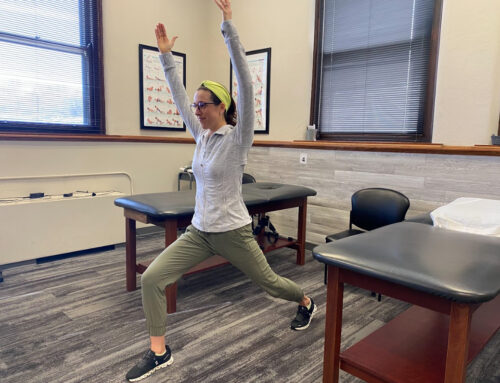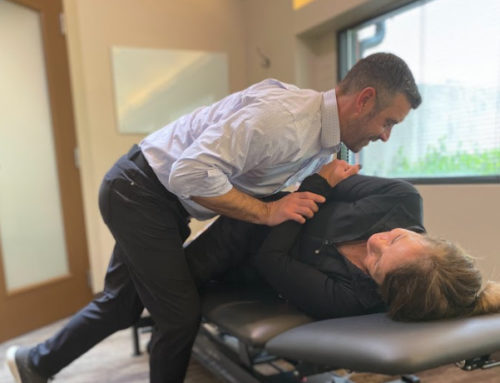Golf season is in full swing, and the cooler fall weather is quickly approaching. This is the point in the season when we are either feeling great, or we have been having that nagging injury that we just can’t shake. We often take the time to warm up and stretch our low backs, but it can be just as beneficial to focus on the less popular body regions.
Mobile joints are strong joints, and this will allow you to produce more power in your swing. Who doesn’t want more power production in their golf swing?
3 very important movements in golf are cervical rotation, shoulder external rotation, and wrist ulnar/radial deviation.
Deficiencies in any of these movements can cause injuries to that deficient joint or to a compensating joint elsewhere in the body.
Your body will find a way to get through the golf swing. This won’t always be safe, so you need to make sure you have proper range of motion in the important joints of your body.
Let’s take a closer look at a few often overlooked movements that are important for a safe and effective golf swing.
 1. Cervical Rotation
1. Cervical Rotation
You can check your cervical rotation by being seated and slowly try to touch your chin to your collarbone (clavicle). Make sure you are not cheating and hiking up your shoulder! If you can touch your chin to your collar bone on both sides, then this is a passed test. If you cannot do this on one or both sides, then you have inadequate cervical rotation. This lack of range of motion can be an energy suck during your backswing and follow-through. Any deficiencies in your swing that compromise stability will significantly decrease your power output.
2. Shoulder external rotation
Checking your shoulder external rotation is fairly simple. Stand next to a mirror and get in a 5 iron stance (how you would stand if you were hitting a 5 iron). Bring your arm up to 90 degrees to the side and externally rotate it as far as you can. You want to get your forearm to your ear. If you cannot do this, then it’s a failed test. Decreased shoulder external rotation will sap your energy system and can cause you to overcompensate by overextending in your low back (this will eventually lead to low back pain). This lack of motion will not allow you to have a proper backswing which will decrease your power output.
3. Wrist ulnar/radial deviation
To check your wrist ulnar and radial deviation, you can put both wrists in front of you with your elbows at 90 degrees. Bend both wrists up at the same time and then down. Check to make both wrists have the same range of motion, and you’d like to be able to move upwards (radial deviation) 20 degrees and downwards (ulnar deviation). Lack of motion in the wrists will drain the energy from your swing and force you to compensate elsewhere. Any compensations in your swing will drain your energy and decrease your overall power.
How did your tests go?
If you failed any of the tests, then you can check out our Instagram for at-home fixes @mtlookoutchiro. If any of the tests from above caused you pain, then you should see a provider at Mt. Lookout Chiropractic and Sports Injury Center for a full assessment.
Taking care of injuries quickly is important, so they don’t get worse.
You also don’t want to be missing out on valuable power output all season long!
– Written by Will Cornett, DC, Titleist Performance Institute Certified Provider









You must be logged in to post a comment.